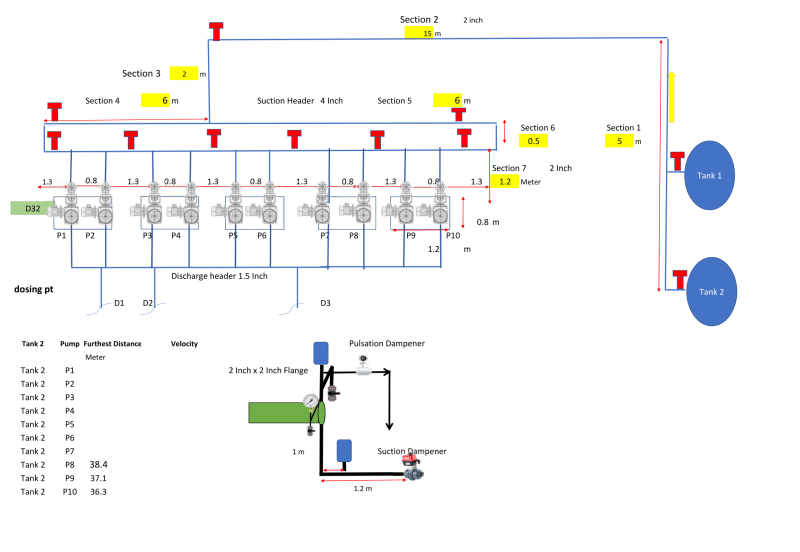bmw318be
Mechanical
- Jun 16, 2010
- 197
Hi,
I have a system that have the following:
Atmospheric Tank is 10 meter height
3 reciprocating pumps running in parallel at 13 GPM
4 Inch common header from the tank and then
3 pumps are tees from this 4 inch header with 2 Inch pipe diameter at 13 GPM.
Pumping is Chlorine
Question,
1. If the 2 tank is open, would the static head is added to be 20 meter or 0.2 bar ?
2. If one scenario, tank 2 is lower 5 meter, would the tank 1 of 10 meter flowback to the tank and balance up ?
3. What is the average velocity of the 4" common header when 2 tank are opened ?
4. Is there anyway to calculate the velocity in the pipe header ?
5. Would the pump P8 starved as it is the furthest distance ?

I have a system that have the following:
Atmospheric Tank is 10 meter height
3 reciprocating pumps running in parallel at 13 GPM
4 Inch common header from the tank and then
3 pumps are tees from this 4 inch header with 2 Inch pipe diameter at 13 GPM.
Pumping is Chlorine
Question,
1. If the 2 tank is open, would the static head is added to be 20 meter or 0.2 bar ?
2. If one scenario, tank 2 is lower 5 meter, would the tank 1 of 10 meter flowback to the tank and balance up ?
3. What is the average velocity of the 4" common header when 2 tank are opened ?
4. Is there anyway to calculate the velocity in the pipe header ?
5. Would the pump P8 starved as it is the furthest distance ?

